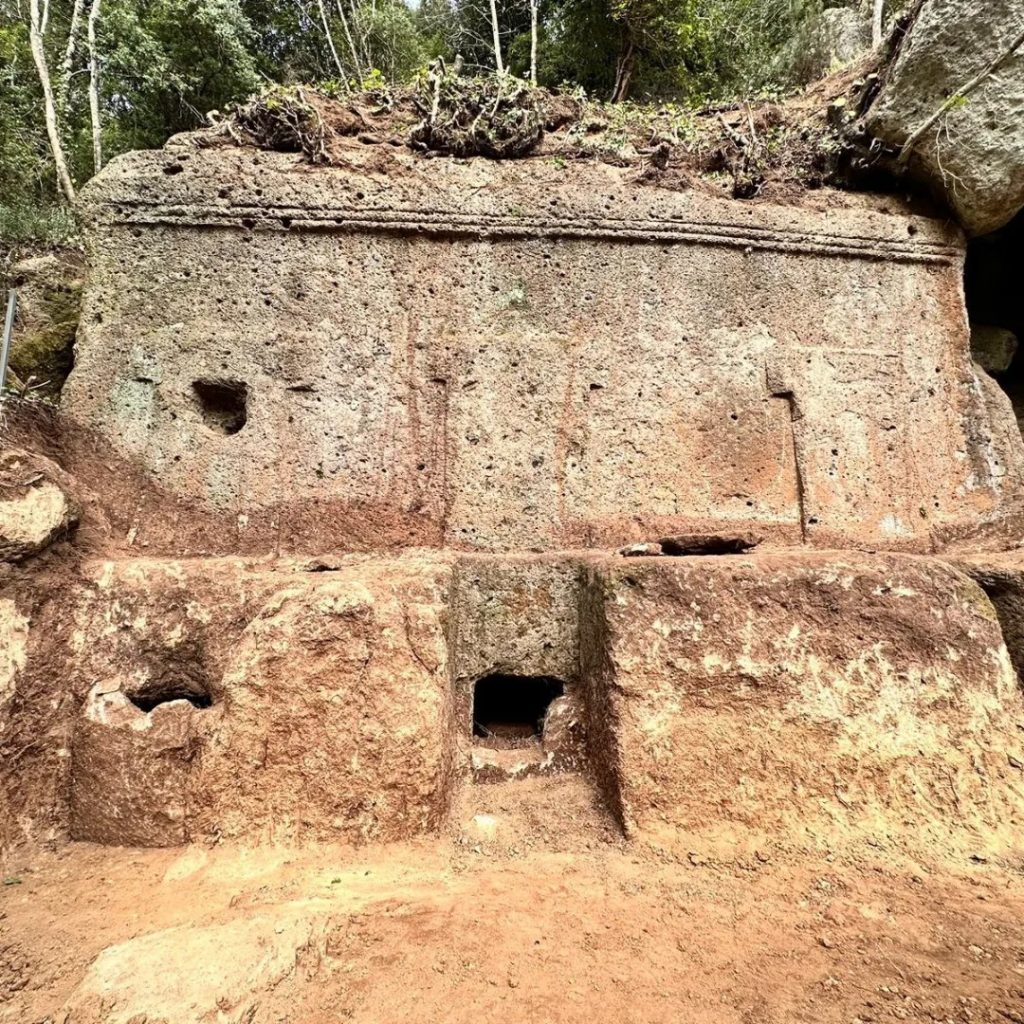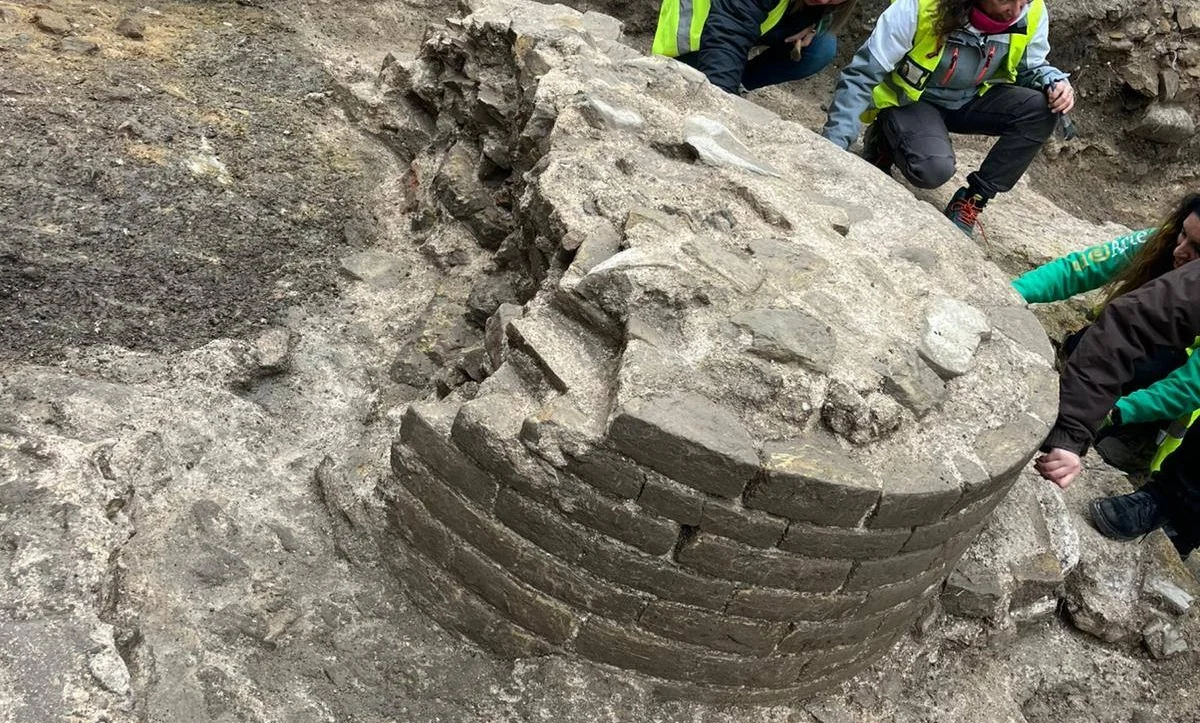In a landscape steeped in history, where the whispers of the past echo through time, a monumental discovery has emerged from the shadows of foliage—a giant, cube-shaped stone tomb, nestled within the ancient San Giuliano Rock Necropolis in central Italy. This captivating find, announced by Italian archaeology authorities, offers a tantalizing glimpse into the enigmatic world of the Etruscans, an ancient society that once flourished between the Arno and Tiber Rivers.
The necropolis, a sprawling testament to Etruscan civilization, lies ensconced within the Regional Park of Marturanum, near the municipality of Barbarano Romano, a mere 45 miles northwest of the eternal city of Rome. Accessible only through rugged ravines and overgrown forests, this hidden gem harbors secrets dating back to the 7th century B.C.E., offering a portal to a bygone era.
The unveiling of the newfound tomb, a collaborative effort between the esteemed firm Gentili Restauri and local authorities, marks a significant milestone in the ongoing exploration of this ancient site. Concealed behind a veil of foliage, the tomb remained partially obscured until recent clean-up operations and brush-clearing efforts revealed its imposing presence—a testament to the enduring allure of archaeological discovery.
Dubbed a "semi-cube" layout, the tomb boasts a distinctive architectural design, with one side left open while three sides are meticulously carved into the surrounding rock wall. Its proximity to the illustrious Queen's Tomb, a grand structure dating back to the fifth century B.C.E., adds to its intrigue, offering a juxtaposition of ancient splendor and timeless mystery.
The Queen's Tomb, a monumental edifice measuring an impressive 46 feet in width and 32 feet in height, stands as a testament to the grandeur of Etruscan funerary architecture. Adorned with side stairs leading to an upper terrace and adorned with semi-finished Doric doors, it offers a glimpse into the opulent rituals and traditions of a bygone era.
For the Etruscans, a society steeped in mystique and tradition, the necropolis served as a sacred repository for the departed, a final resting place where elaborate funerary rites and ceremonies unfolded. From painted murals adorning the walls of burial chambers to finely crafted pottery and bronze artifacts, each discovery offers a window into the rich tapestry of Etruscan culture.
As news of the discovery reverberates through the archaeological community, the Superintendency of Archaeology, Fine Arts, and Landscape in Southern Etruria has announced plans to inform the public of upcoming opening dates, inviting enthusiasts and scholars alike to witness the unfolding saga of this ancient marvel.
In the heart of Italy's verdant landscapes, where the past meets the present, the legacy of the Etruscans endures—a testament to the enduring spirit of exploration and the timeless allure of discovery.







